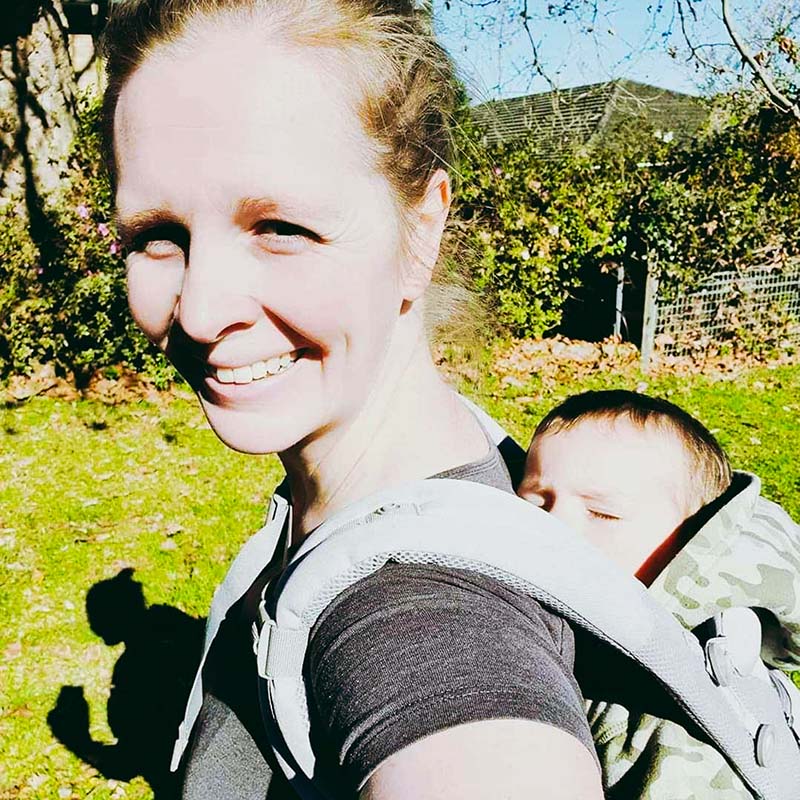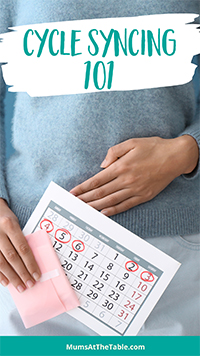If that dreaded “time of the month” often turns your entire schedule around, cycle syncing could be perfect for you.
Cycle syncing is a semi-new approach that aims at regulating your exercise, nutrition and overall lifestyle to the natural rhythm of your menstrual cycle. Although this method has gained recent popularity, the overall concept is something many women have followed for generations.
We’ll go into how cycle syncing works but first, a little bit about your menstrual cycle and the hormones that drive it.
Knowing your menstrual cycle
A menstrual cycle is a term used to describe the rhythms of hormonal changes a woman goes through each month. The cycle begins with Day 1, the time in which the uterus sheds its lining (usually called a period). For many women, this can last for 5–7 days, starting heavier and then becoming lighter towards the end.
Day 14 in the cycle is the ovulation phase, where an egg is released and awaits sperm fertilisation. During this time the lining of the uterus thickens in preparation for receiving and housing the fertilised egg which will eventually become a baby. If fertilisation does not occur, the uterus will again shed. This happens for most women every 28 days.
There can be a lot of symptoms associated with the menstrual cycle which are commonly known as PMS (premenstrual symptoms).
Meet your hormones
We can have a vast array of fluctuating symptoms during our cycle because of female sex hormones. Here’s a brief introduction to what they are, along with their corresponding phases.
Menstrual phase
The uterus sheds its lining and the period starts during this phase. Oestrogen and progesterone levels (more on these hormones later) are low in this phase.
Follicular Phase
Luteinising hormone: In weeks one to two of the cycle, luteinising hormone is needed to stimulate the ovarian follicles in the ovary in preparation for ovulation. For the remainder of the cycle (weeks three and four), it is involved in the production of progesterone. This is required to support the early stages of pregnancy if fertilisation occurs.
Follicle-stimulating hormone: This hormone stimulates follicles on the ovary to grow and prepare the eggs for ovulation. As the follicles increase in size, they release oestrogen.
Ovulatory phase
Oestrogen: This infamous hormone works in many ways, but is especially important for ovulation. It’s also responsible for the thickening of the uterus in preparation for the fertilised egg and ultimately, pregnancy. During this time, a woman’s sex drive may be higher as this is the body’s way of saying, “Now you’re fertile. Now’s the time!”
High oestrogen levels are also the cause of yucky PMS symptoms and mood swings that come later in the cycle. It’s why you may feel like your entire day is ruined (or a week, for that matter).
Luteal phase
Progesterone: One of the main roles of progesterone is to get the uterus perfect for housing a baby. Progesterone levels are low during the first half of the cycle and then steadily increase from ovulation onwards. If fertilisation doesn’t occur there is a rapid decline before the uterine lining sheds and the period starts.
How cycle syncing works
Think of it like this—women have four phases to their menstrual cycle, just like the four seasons:
- Winter: Menstrual phase
- Spring: Follicular phase
- Summer: Ovulatory phase
- Autumn: Luteal phase
Cycle syncing works by aligning your diet and lifestyle to these phases just like you would to the seasons. During winter (menstrual phase), it’s a time of rest and hibernation, and consuming warm nourishing food and drink.
When spring (follicular phase) arrives, everything is bursting with new life, flowers are blossoming, birds are singing and it’s time to frolic in the fields. It’s the perfect time for intense workouts like strength training, as exercise performance levels are at their highest for almost the next two weeks. During this time, energy levels are high due to hormone levels being at their peak for creating and sustaining new life.
During summer (ovulatory phase) the high energy continues, but eventually starts declining as autumn returns. Summer and autumn are the times to prepare for winter by eating iron-rich foods like dark leafy greens. These are also the seasons to control blood sugar levels by including more healthy fats in the diet.
Simply put, the syncing method works by adjusting your lifestyle habits to the different phases of the menstrual cycle. The hormonal shifts distinctly change energy and motivation levels. So why not harness this and go with the natural rhythms of how your body works?
Instead of “hating” your cycle, you could try to live in sync with it and use it as your superpower. Instead of feeling like you’re let down by your cycle because it interrupts your life, why not plan your life around the four unique seasons to get the most out of your time, energy, fertility and productivity? Become a period queen!
Two period queens
Bréane Chapman and Brooke Sutton are two ladies who follow the cycle syncing method to supercharge their lives. These are their stories:
Bréane’s story

I remember as a teen thinking I should really keep my mouth shut when other girls shared how awful their periods were. The cramps, the heat packs, paracetamol, days off sick at home in bed when Aunt Flow visited. This was so vastly different to my experience!
My period would arrive with a few pesky pimples and be done in about five days. Nothing more to do than remember to change my tampon regularly. The period god (goddess?) had smiled down upon me! But as I got older, I started to notice that emotionally, things were tricky.
In my mid 20s, I discovered Lucy Peach (aka The Period Queen) and went to see her live show, “Period Unicorn”. This live show explained (in a very entertaining way) the four phases of the menstrual cycle and the hormones at play in each. Lucy shared the secret life hack, which was understanding and harnessing the strengths (and weaknesses) of these hormones during each phase.
This. Blew. My. Mind.
I inhaled her book and audio series, and trawled her website and social media to learn as much as I could. I realised why I would consistently make plans or agree to do something one week and then the next week, when the plans were right there in front of me, be completely furious at the commitment my previous self had made. It explained my keenness for intimacy and closeness with my husband one day, and the next feeling like I couldn’t stand the sound of his breathing.
I knew about PMS but this was way more nuanced. It also took into account the amazing feel-good hormones that came with ovulation (something I hadn’t given much thought to since I wasn’t planning or trying to fall pregnant).
I started highlighting the four phases in my planner in four different colours and estimating them to help guide me in making plans. Once I got into the rhythm of this, it was truly life-changing.
For example, when asked to be on a roster for church, I would pick the weekends in my “do” or “give” phases (terms used in Lucy Peach’s book to describe the pre and post-ovulation phases—all the feel-good, pumped-up hormones). I also leave the weekends in my “take” (pre-menstrual) and “dream” (menstrual) phases free from commitments.
The other thing that was huge for me was openly and regularly sharing with my husband which phase I was in. This has been a wonderful new dimension and level of understanding in our relationship.
Every Monday night, I have a reminder that goes off on my phone that says “cycle check-in”. It even has the little drop of blood emoji (because period blood doesn’t have to be seen as gross). This isn’t a reminder to go on a long bike ride but to help me remember to touch base with my body. It’s also to let my husband know where I am at over the coming days. I can check in with what’s coming up in my calendar and my hormones.
This change in mindset and how I plan my time has been a game-changer! Now I see my period as a time to go into “ultimate self-care mode” and I (weirdly) cherish it, and have missed having a cycle in life seasons of pregnancy and breastfeeding.
I also now feel like I can confidently look forward and have energy for the things I commit to. I know when to push myself, what to say at work and when to be okay with the bare minimum. Such a freeing experience and an exercise in true self-love!
Brooke’s story

I was 31 years old, recovering from the particularly unpleasant experience of a posterior labour and birth complications of my first baby when I first properly learnt about the stages of my cycle. I’d been having my period for nearly 20 years by this stage. I wish someone had taught me to use my hormonal cycle to my advantage.
It was a close friend who first mentioned to me that she regretted committing to an activity during her active cycle stage, especially considering she was in her low-energy stage when she followed through. I wasn’t sure what she was talking about. But it interested me so I went off to research. I felt like I had unlocked the secret power of the female menstrual cycle.
As women, we go through a monthly menstrual and hormonal cycle. I knew this. What I didn’t know was how I could use this to my advantage. It has totally changed how I manage my life, my commitments and made me more mindful of when I commit to things, but also of my mood.
Quite basically, we go through energy phases, depending on what point we’re up to in our cycle. I find I overcommitted, said yes to everything, and had a stack of energy and motivation, but when it came time to follow through, I just couldn’t. Not due to an unwillingness to follow through—I legitimately had no motivation and no energy.
Being mindful of when my luteal phase is has meant I’ve become way more balanced in when and how I commit to stuff. If I have to do something, I commit to it during the luteal phase. If it’s avoidable, I’ll decline. I’ve also asked friends and my husband to help keep me accountable and mindful which has helped. Not only is my hubby more aware of my cycles and moods, he’s much more understanding on those days when I just cannot.
Another recent learning is food: Being mindful of what I’m eating in the week leading up to my uterine shedding and bleeding. Is it anti-inflammatory? Is it low GI? This all helps with the management of my mood and discomfort.
Women are often required to “just get on with it”. Pop some paracetamol and ibuprofen and just get on with life. I have felt so empowered by the concept of utilising my hormonal cycles to my benefit. Being aware of my high energy phase and planning stuff then, while minimising my commitments during that low energy phase and being mindful of what foods I am consuming.
The other life-changing decision I made was to use a menstrual cup but that’s a conversation for another day.
Womancode
If you are struggling with your cycle or just want to find out how to use your cycle to your advantage, start tracking your period. Remember, lifestyle choices and diet will come into play with cycle syncing. You will need to start listening and observing your body. But it’s all worth it.
If you are taking the hormonal birth control pill, consider if this is right for you. Not all women have a regular cycle with contraceptives.

How helpful was this article?
Click on a star to rate it!
5 / 5. 1
Be the first to rate this post!
Adriana Wales
Related posts
Subscribe
Receive personalised articles from experts and wellness inspiration weekly!

